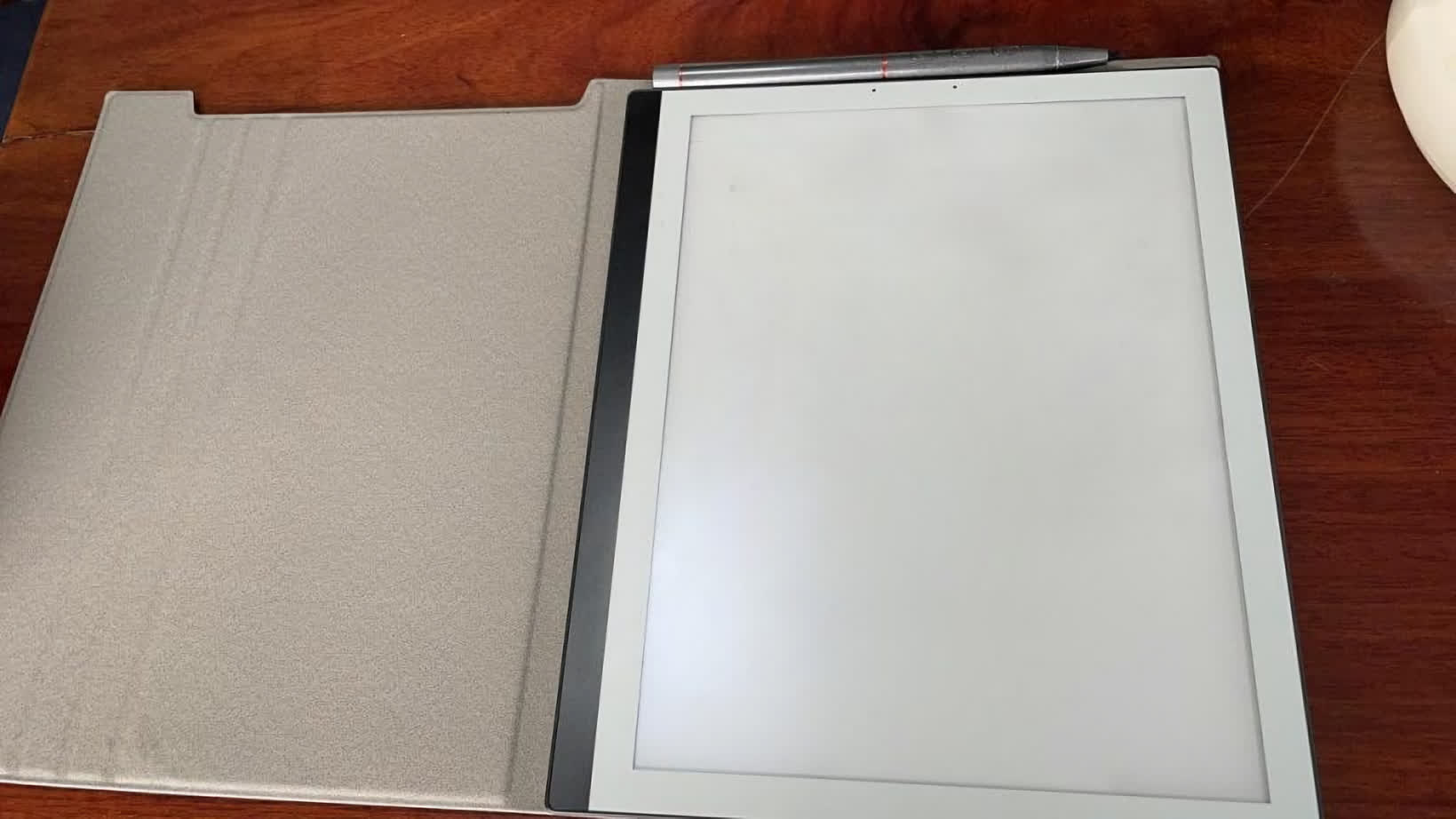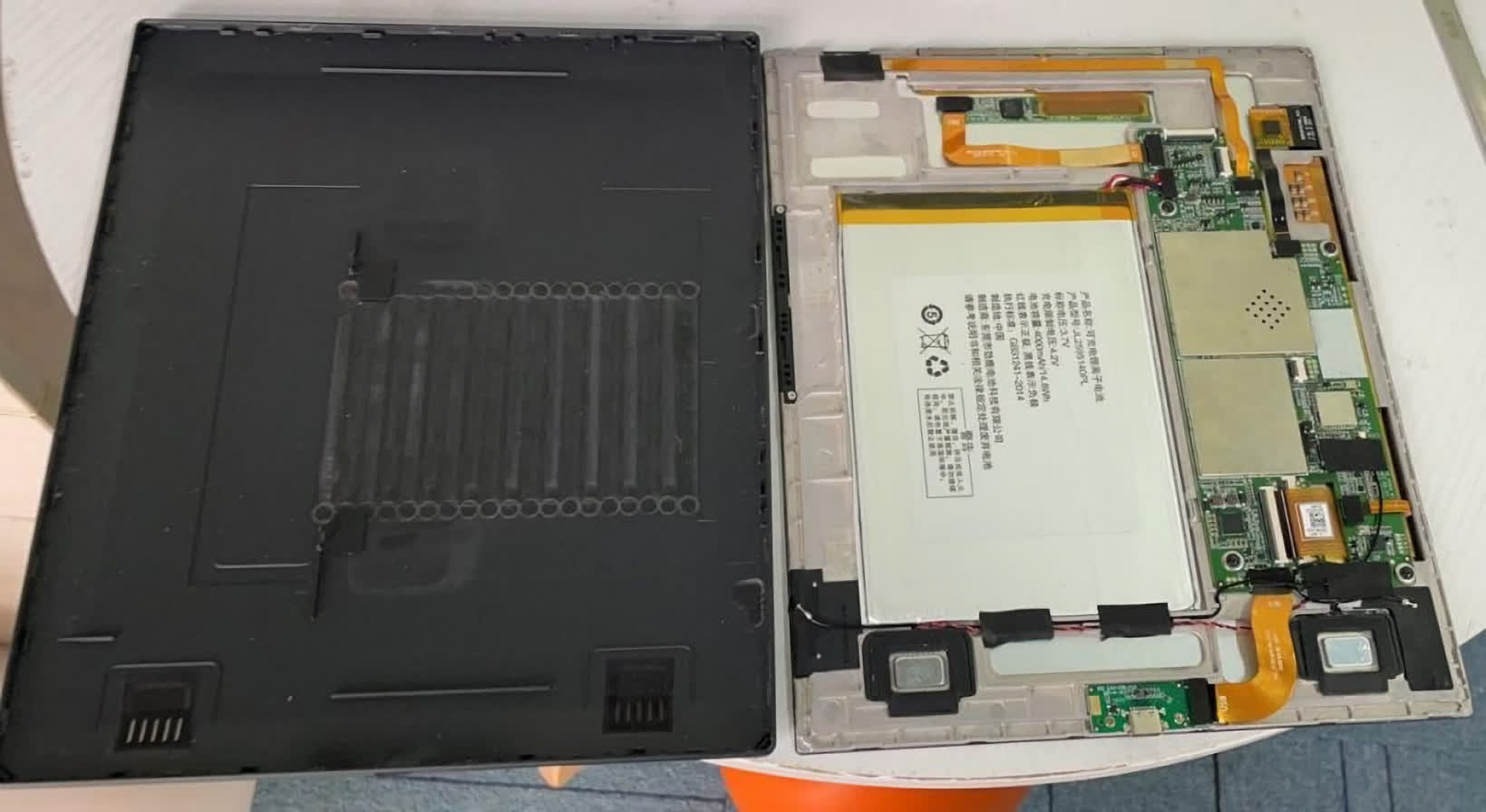Forward-looking: Pine64 is mainly known for manufacturing alternative single-board computers to the Raspberry Pi and a few other budget-oriented electronics. At the moment, Pine64's lineup includes laptops, phones, smartwatches, and tablets, but it will soon grow with the launch of PineNote, an e-ink reader running Linux and powered by the Quartz64 SoC.

Inside the Quartz64 SoC in the PineNote, you'll find a quad-core RK3566 CPU with four Arm Cortex A55 cores clocked at 2.0GHz. There's also 4GB of LPDDR4 RAM, 128GB eMMC flash storage, two microphones, two speakers, a USB-C port to transfer data or fast charging, and 5GHz AC Wi-Fi.
For the display, there’s a 10.3-inch touchscreen panel with a 1404×1872 resolution, capable of displaying 16 levels of grayscale, but Pine64 also added added a capacitive glass layer and a Wacom electromagnetic resonance layer (EMR) on top of it for pen input.
Moreover, it has an adjustable front light illuminating the panel, allowing users to choose between a warmer or cooler light tone. In the future, the manufacturer believes it will be possible to implement an automatic front light that reduces the panel's emitted blue light depending on the time of the day.

PineNote prototype with case and pen
The back of Pine64's e-reader is covered in "grippy" plastic, while the inner frame, where the e-reader components are attached, uses magnesium alloy for increased sturdiness. The display is covered in scratch-resistant and glare-reducing hardened glass.
Pine64 will also launch a magnetic cover for the e-reader and an EMR pen, featuring a power on/off indicator, a previous/next page button and an eraser button. This pen is currently the only one recommended for PineNote, but other EMR pens will also be supported. The list of compatible pens should increase once the tablet has been released.

Internal layout of a PineNote engineering prototype
The first batch of PineNotes will be available for $399. However, you should consider that those buying "a PineNote in the first batch... must expect to write software for it, not to write notes on it." According to Lukasz Erecinski, Pine64 community manager, "the software shipping from the factory for the first batch will not be suitable for taking notes, reading e-books, or writing your dissertation. It may not even boot to a graphical environment."
This batch should be running Linux Manjaro (BSP kernel 4.19) with either KDE's Plasma Mobile or regular Plasma as the UI, but if the devs can get the e-ink panel driver to work with 5.xx kernel before the release, this might change. The first batch will also come with a magnetic cover and an EMR pen, but future batches won't.
https://www.techspot.com/news/90812-pine64-introduces-pinenote-399-e-ink-reader-running.html